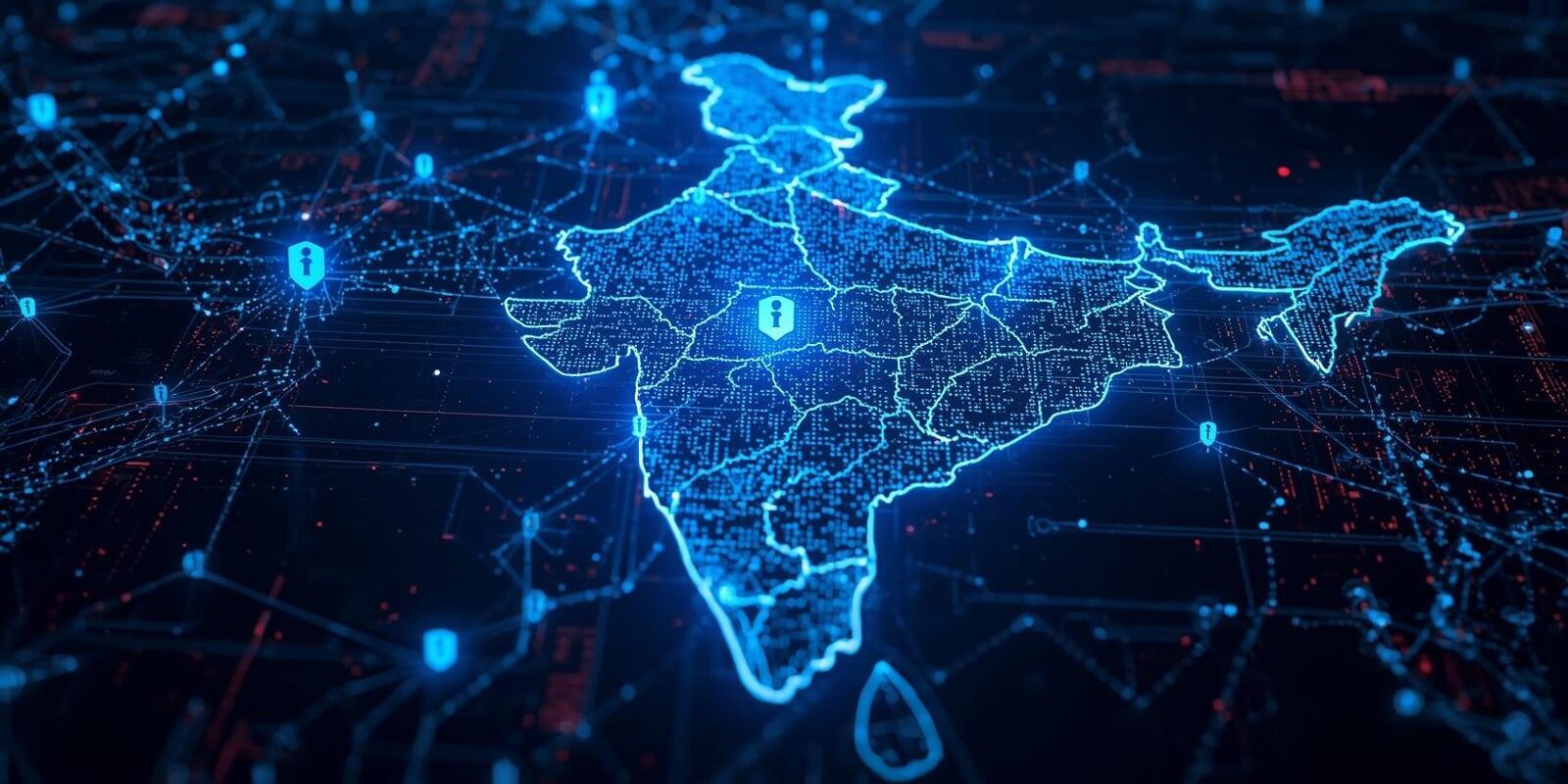Introduction
Digital transformation in India accelerates growth but also heightens cyber risks. As organizations adopt technologies like cloud, AI, and IoT, cyberattacks become more sophisticated. Cybersecurity has shifted from a secondary concern to a core part of risk management.
A recent Kaspersky report recorded a 37% jump in Indian cyberattacks in 2023, making India a top target in Asia. In this dynamic landscape, securing systems, ensuring compliance, managing risk, and promoting cyber awareness are critical for business survival and reputation.Understanding the Cybersecurity Landscape in India

India’s cybersecurity landscape is more complex than ever before, driven by the growing dependency on digital platforms. The rise of smart cities, digital payments, and online services has created new vulnerabilities. Cybercriminals are constantly adapting, using more advanced tactics such as ransomware-as-a-service, AI-driven attacks, and supply chain compromises to exploit weaknesses.
The Indian government has recognized these challenges and taken proactive steps to address them. The National Cyber Security Policy 2020 aims to create a robust cybersecurity ecosystem, focusing on strengthening the country’s defense against cyberattacks and enhancing the overall security posture of critical infrastructure. However, the onus remains on businesses to implement their own defense strategies.
For Indian enterprises, understanding the cybersecurity threat landscape is crucial. Whether it’s a small business handling personal data or a large enterprise managing critical infrastructure, every organization must adopt a layered approach to cybersecurity.Cybersecurity: The Pillar of Business Continuity
Cybersecurity is not just about protecting against data breaches—it is about ensuring the resilience of business operations. In the context of India, where organizations are experiencing rapid digitalization, the cyber resilience of a company is becoming as important as its financial health.
Cyberattacks can disrupt operations, lead to financial losses, damage reputation, and compromise sensitive data. From phishing scams targeting employees to advanced persistent threats (APTs), the potential consequences are severe. Take, for example, the 2020 cyberattack on Jawaharlal Nehru Port Trust (JNPT), one of India’s largest ports, which disrupted its operations for several days. This incident underscored the need for critical infrastructure protection and the role cybersecurity plays in safeguarding national interests.
At the core of cybersecurity is the concept of defense in depth—an approach that layers multiple security measures to protect data and networks. From firewalls and encryption to intrusion detection systems (IDS) and advanced endpoint protection, each layer adds another barrier to potential threats.
Compliance and Risk Management: Navigating the Regulatory Landscape

The regulatory environment around cybersecurity in India is evolving rapidly, with businesses needing to keep pace with national and international laws. Compliance is no longer just about avoiding penalties; it is integral to managing risk and building trust with customers, partners, and stakeholders.
In India, compliance with cybersecurity regulations is enforced through frameworks such as:
The Information Technology (Reasonable Security Practices and Procedures and Sensitive Personal Data or Information) Rules, 2011: This legislation mandates businesses to adopt reasonable security practices to protect sensitive personal data.
The Personal Data Protection Bill, 2019: Though still under review, this bill aims to regulate data protection and privacy in India, closely resembling the EU’s General Data Protection Regulation (GDPR). It sets stringent guidelines for the collection, storage, and processing of personal data, with significant penalties for non-compliance.
The Cybersecurity Framework for the Financial Sector: The Reserve Bank of India (RBI) has issued a detailed framework for cybersecurity governance within the financial sector, requiring banks and financial institutions to adopt robust cybersecurity measures.
For businesses, compliance involves more than adhering to rules; it requires risk-based approaches to security. A company must assess its vulnerabilities, identify the potential risks it faces, and implement security controls accordingly. This is where risk management frameworks like ISO 27001, NIST Cybersecurity Framework, and COBIT come into play.
These frameworks provide a structured methodology for identifying, assessing, and mitigating cybersecurity risks. By conducting regular cybersecurity audits and risk assessments, businesses can identify weaknesses and take corrective actions before an attack occurs.Risk Management Strategies: Proactive Measures for Mitigation
Cyber risk management is an ongoing process that involves identifying, assessing, and mitigating risks across the entire organization. To effectively manage risk, businesses need to implement several key practices:
Risk Identification: Identify potential vulnerabilities within your organization’s infrastructure, including outdated software, misconfigured systems, or unsecured endpoints.
Risk Assessment: Assess the likelihood and impact of identified risks. Tools like risk matrices and risk scoring systems can help in this process.
Risk Mitigation: Implement strategies to reduce risk exposure. This could involve patching vulnerabilities, deploying firewalls, or enhancing employee training on security best practices.
Incident Response Planning: Having a solid Incident Response Plan (IRP) is essential for minimizing the impact of an attack. This plan should outline the steps to take during and after a cyberattack, including communication protocols, data backup procedures, and recovery strategies.
Cyber Awareness: The Human Element in Cybersecurity

Even with the most advanced cybersecurity tools in place, the human element remains the weakest link in the cybersecurity chain. Cyber awareness is a critical component of any organization’s security strategy.
Employee training is one of the most effective ways to reduce the risk of cyber incidents. Employees should be educated on recognizing phishing attacks, managing strong passwords, understanding social engineering tactics, and securing their devices. In fact, phishing remains one of the most common methods of attack, and a well-informed employee is the first line of defense.
In India, a growing number of businesses are incorporating cybersecurity awareness training into their corporate culture. Some companies are also conducting regular simulated phishing campaigns to test employee vigilance and improve their response to real-world cyber threats.
Moreover, raising awareness goes beyond employees. It extends to third-party vendors and partners who may have access to critical systems and data. Ensuring that these external entities follow the same security protocols can prevent third-party breaches—a growing threat in today’s interconnected business environment.Leveraging Technology for Enhanced Cybersecurity

Technology plays an indispensable role in strengthening cybersecurity, ensuring compliance, and managing risk. Key technologies helping organizations improve their cybersecurity efforts include:
AI and Machine Learning: AI-powered tools can detect anomalous behavior, predict potential threats, and automate responses to security incidents.
Cloud Security Solutions: Cloud providers offer built-in security features that ensure data protection, even as businesses scale their operations globally.
Blockchain for Data Integrity: Blockchain is being explored as a technology for improving data integrity and preventing fraud in industries like finance, healthcare, and supply chain management.
Zero Trust Architecture: The Zero Trust model assumes that all users, whether inside or outside the organization’s network, should be continuously authenticated and authorized before gaining access to resources.
Conclusion: Key Takeaways for Cybersecurity in India
As India continues its digital journey, securing sensitive data and mitigating risks must remain at the forefront of every business strategy. Cybersecurity, compliance, risk management, and cyber awareness are interconnected components that together form a resilient defense against the growing wave of cyber threats.
Key takeaways for Indian businesses:
Cybersecurity is a critical business function, essential for protecting data, maintaining customer trust, and ensuring operational continuity.
Compliance with national and international regulations is key to mitigating legal, financial, and reputational risks.
Risk management frameworks such as ISO 27001 and NIST help businesses proactively identify and mitigate risks.
Cyber awareness training should be a continuous process, empowering employees to recognize and respond to threats.
Advanced technologies like AI, cloud security, and blockchain are driving the future of cybersecurity in India.
By integrating these strategies, businesses can build a cyber-resilient future, ensuring that they are not only compliant with regulatory requirements but also well-prepared to withstand the ever-evolving threat landscape.
Frequently Asked Questions (FAQ)
Q: How can businesses in India stay updated on the latest cybersecurity regulations?
A: Staying informed through government portals like the Ministry of Electronics and Information Technology (MeitY) and industry organizations such as the Data Security Council of India (DSCI) is crucial. Additionally, subscribing to cybersecurity journals and attending industry events can provide the latest insights.
A: Small businesses should focus on implementing basic security.

